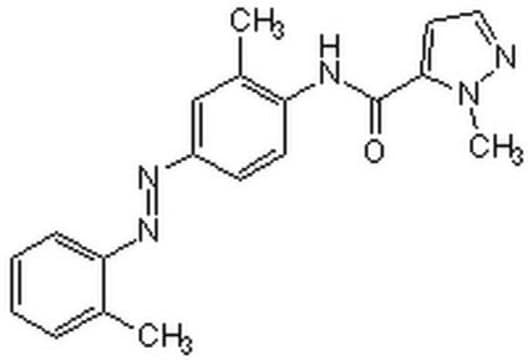No; Sigma-Aldrich has no source for pure 2,3,7,8-Tetrachlorodibenzo-p-dioxin. It is only available as Supelco 48599: 2,3,7,8-TCDD, 10 μg/mL in toluene, ampule of 1mL.
48599
2,3,7,8-tétrachlorodibenzo-p-dioxine (standard qualitatif) solution
analytical standard
Synonyme(s) :
2,3,7,8-TCDD
About This Item
Produits recommandés
Qualité
analytical standard
CofA (certificat d'analyse)
current certificate can be downloaded
Conditionnement
ampule of 1 mL
Température de stockage
2-8°C
InChI
1S/C12H4Cl4O2/c13-5-1-9-10(2-6(5)14)18-12-4-8(16)7(15)3-11(12)17-9/h1-4H
Clé InChI
HGUFODBRKLSHSI-UHFFFAOYSA-N
Description générale
Application
Mention d'avertissement
Danger
Mentions de danger
Conseils de prudence
Classification des risques
Aquatic Chronic 1 - Asp. Tox. 1 - Flam. Liq. 2 - Repr. 2 - Skin Irrit. 2 - STOT RE 2 - STOT SE 3
Organes cibles
Central nervous system
Code de la classe de stockage
3 - Flammable liquids
Classe de danger pour l'eau (WGK)
WGK 3
Point d'éclair (°F)
39.2 °F - closed cup
Point d'éclair (°C)
4 °C - closed cup
Listes réglementaires
Les listes réglementaires sont principalement fournies pour les produits chimiques. Seules des informations limitées peuvent être fournies ici pour les produits non chimiques. L'absence d'indication signifie qu'aucun des composants n'est répertorié. Il incombe à l'utilisateur de s'assurer de l'utilisation sûre et légale du produit.
EU REACH Annex XVII (Restriction List)
Faites votre choix parmi les versions les plus récentes :
Déjà en possession de ce produit ?
Retrouvez la documentation relative aux produits que vous avez récemment achetés dans la Bibliothèque de documents.
-
Can I get pure 2,3,7,8-Tetrachlorodibenzo-p-dioxin from Sigma-Aldrich?
1 réponse-
Utile ?
-
-
What is the molecular weight of 2,3,7,8-Tetrachlorodibenzo-p-dioxin, Product 48599?
1 réponse-
The molecular weight of 2,3,7,8-TCDD is 321.97 Da.
Utile ?
-
-
What is the Department of Transportation shipping information for this product?
1 réponse-
Transportation information can be found in Section 14 of the product's (M)SDS.To access the shipping information for this material, use the link on the product detail page for the product.
Utile ?
-
-
Is Product No. 48599, 2,3,7,8-Tetrachlorodibenzo-p-dioxin solution, appropriate for use in tissue culture studies?
1 réponse-
The 2,3,7,8-Tetrachlorodibenzo-p-dioxin solution (10 μg/mL in toluene), is sold as 1mL in a flame sealed ampule. It is made to be used as a chemical standard with US EPA drinking and wastewater analytical methods. We have no knowledge of its use in tissue culture.
Utile ?
-
Filtres actifs
Notre équipe de scientifiques dispose d'une expérience dans tous les secteurs de la recherche, notamment en sciences de la vie, science des matériaux, synthèse chimique, chromatographie, analyse et dans de nombreux autres domaines..
Contacter notre Service technique

![Benzo[a]pyrène ≥96% (HPLC)](/deepweb/assets/sigmaaldrich/product/structures/253/820/be96d879-1811-46c0-8f11-612019691c2d/640/be96d879-1811-46c0-8f11-612019691c2d.png)










